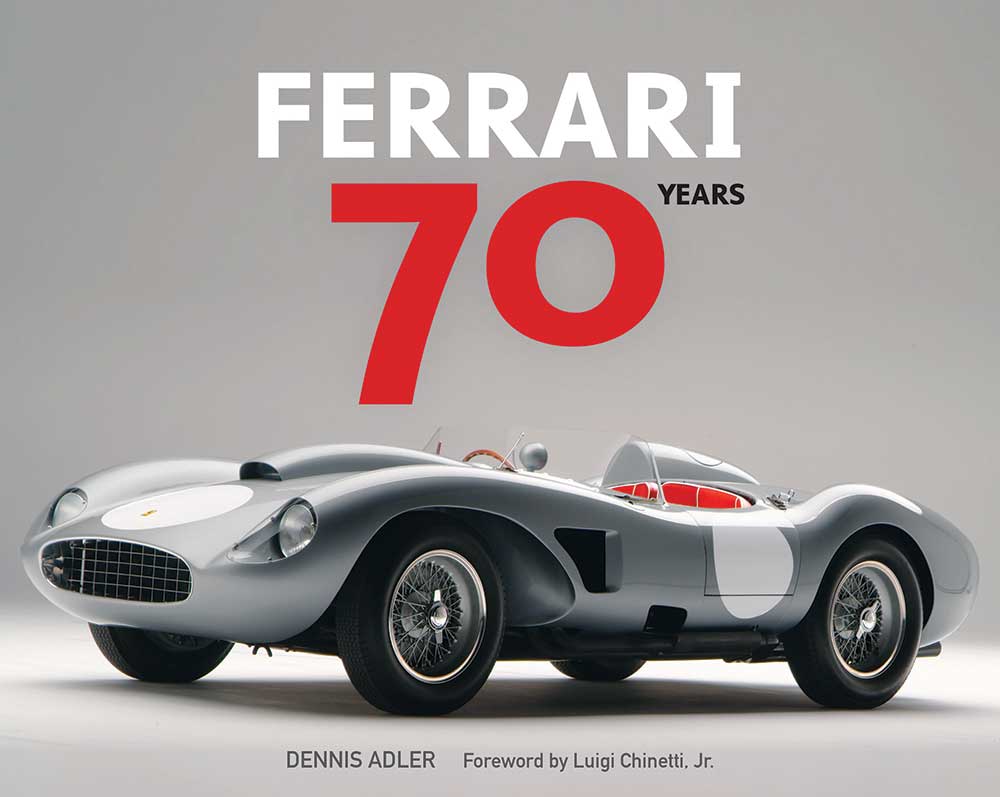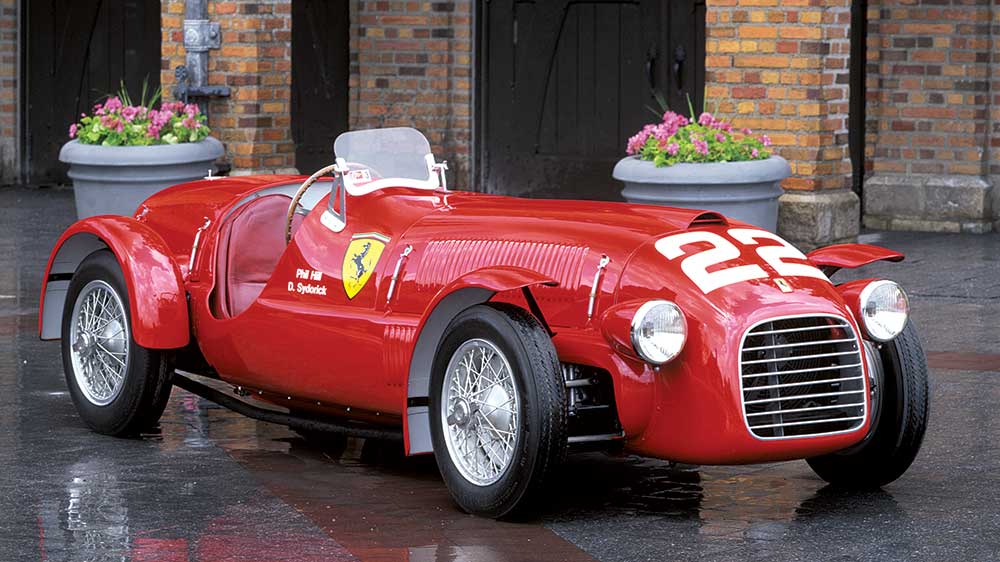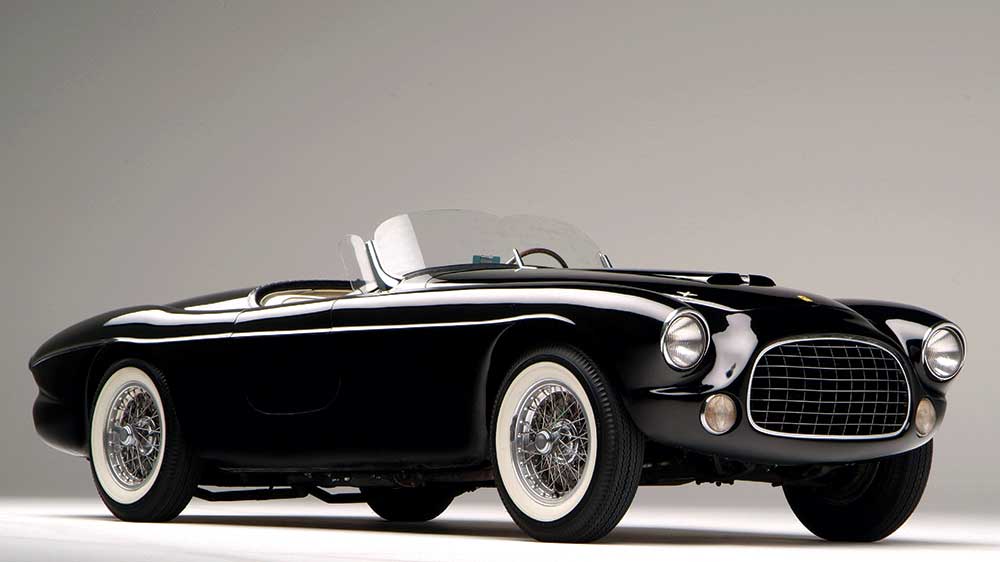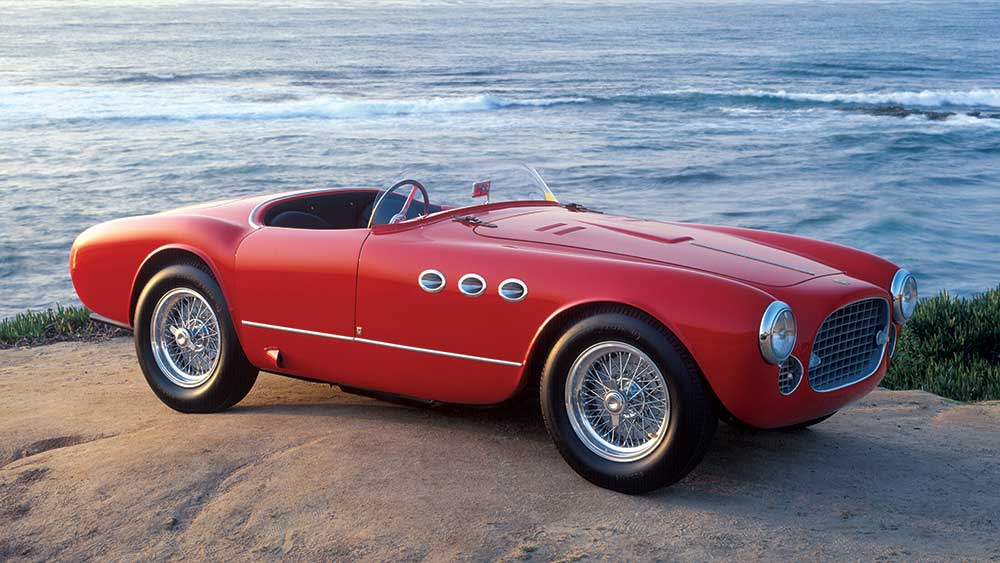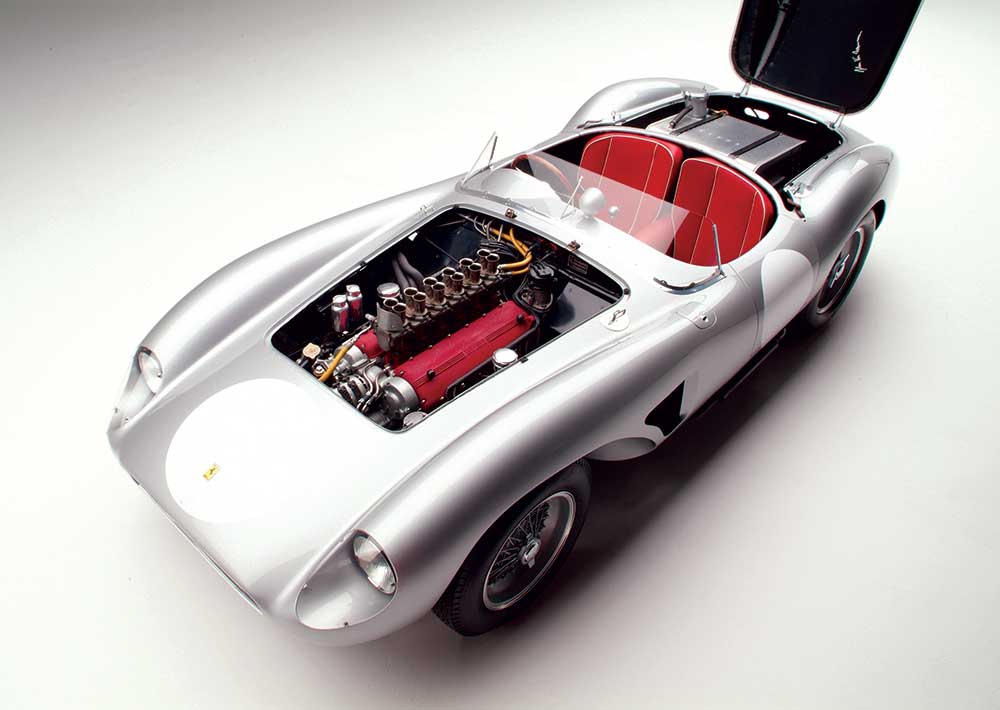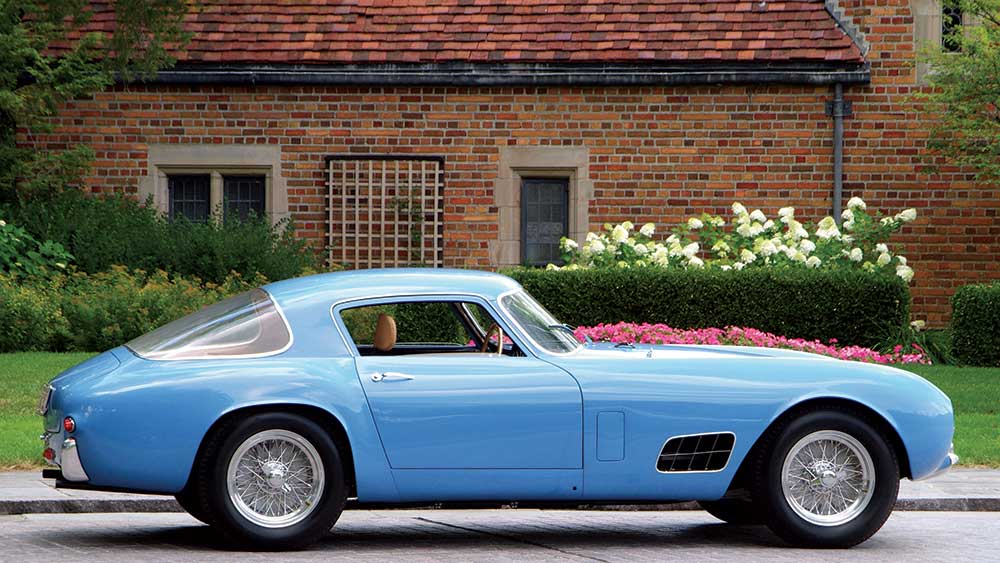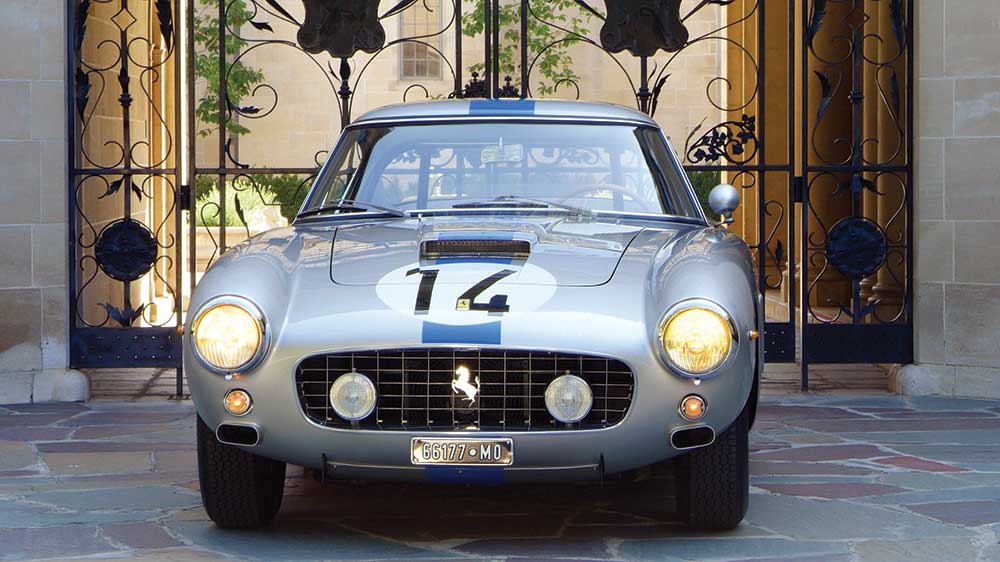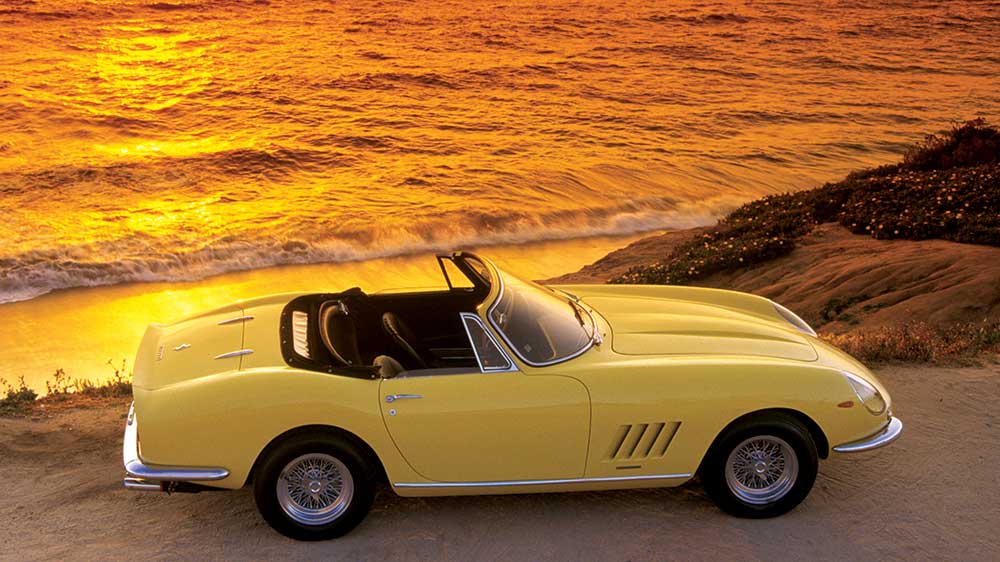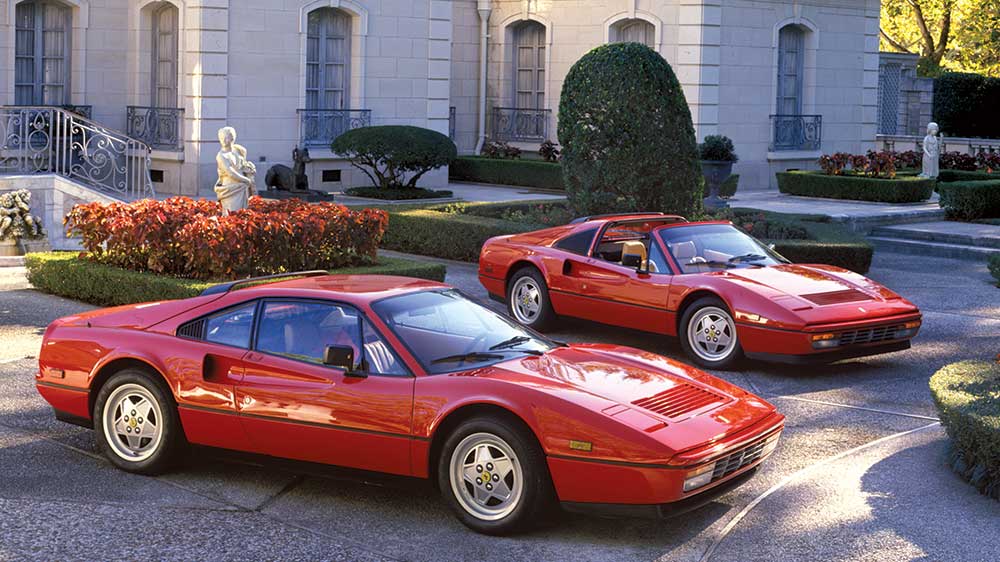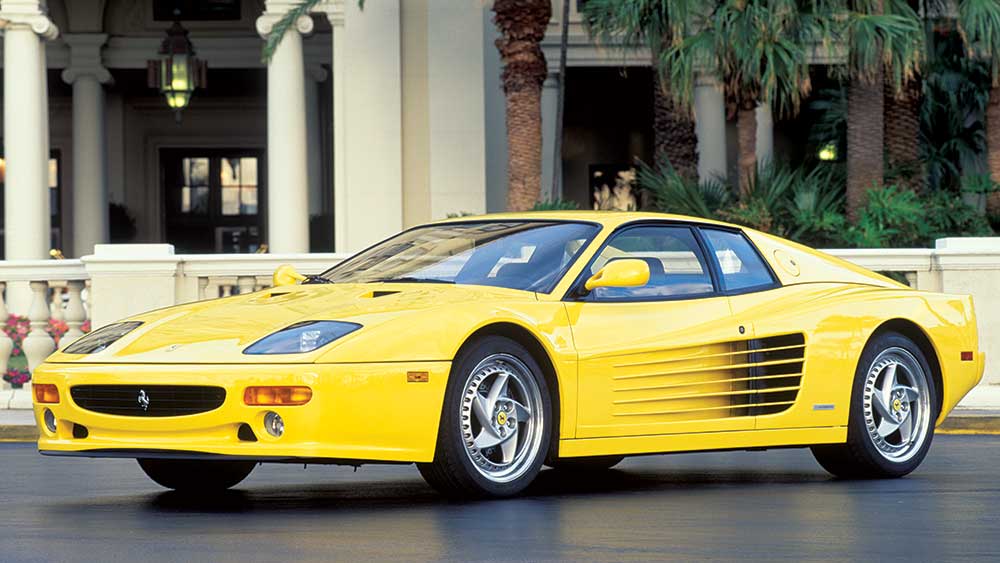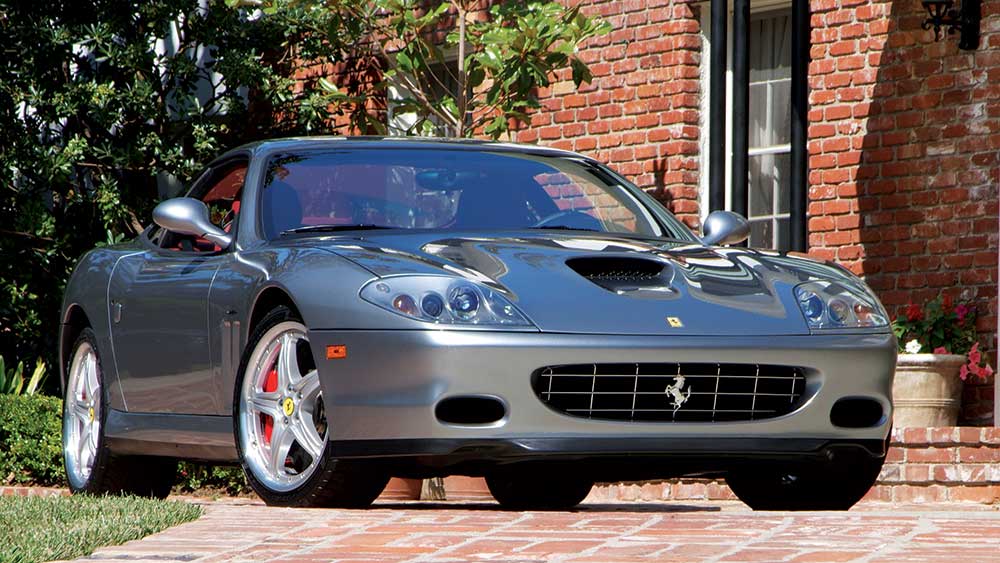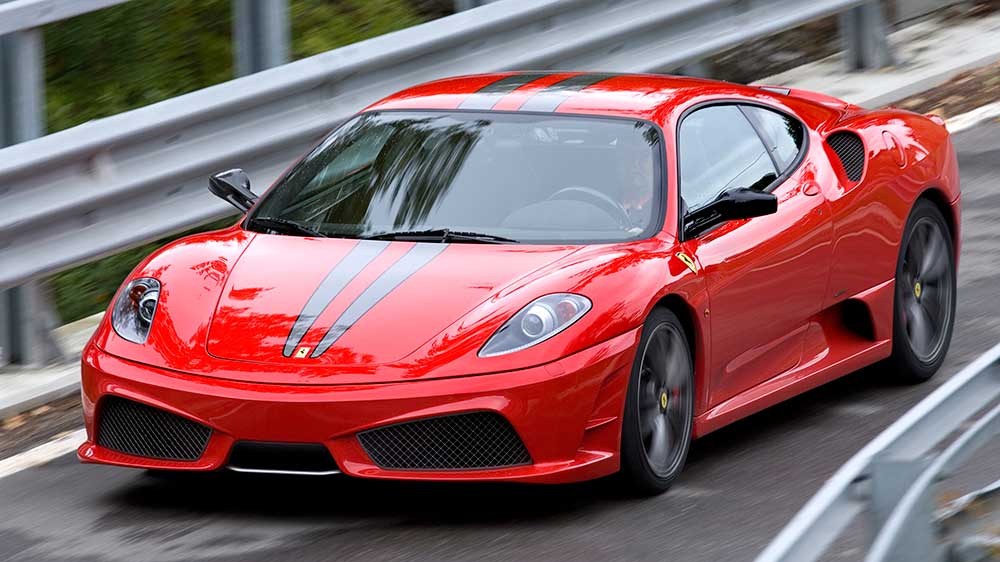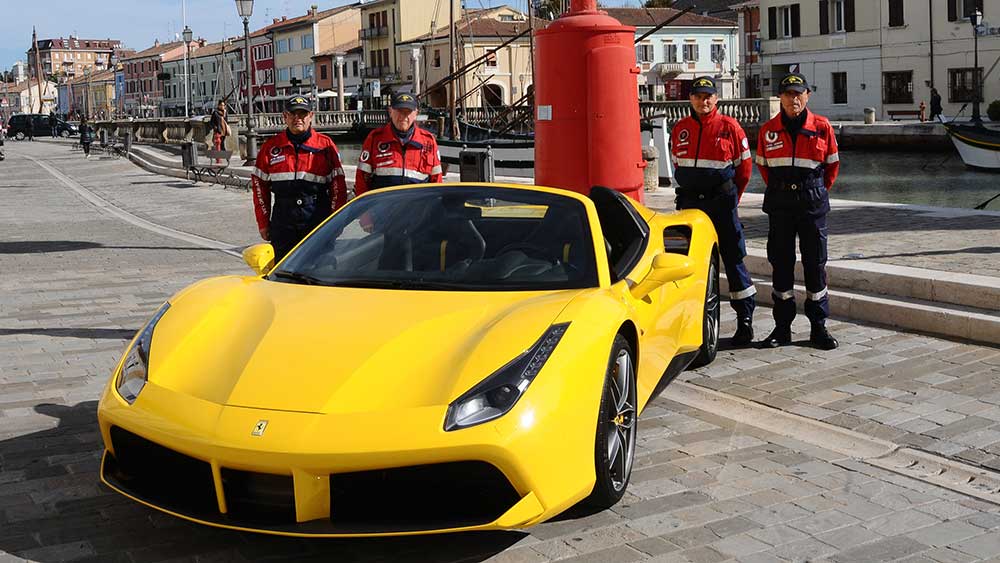Ferrari 70 Years by Dennis Adler
Foreword by Luigi Chinetti, Jr.
Book Review by Gary Smith
The difference between race cars and road cars in the early postwar era was strictly a matter of interpretation. Road going racing cars or racing cars driven on the street? In the early days there wasn’t much difference. Several very interesting chapters are devoted to the early history of Ferrari, the War years, and Ferrari’s relationship with Luigi Chinetti.
Why did Ferrari build twelve cylinder engines? “In creating his first sports cars, Ferrari decided that if Maserati built four-cylinder engines, Talbot six, and Alfa Romeo eight, he would build twelve.” Chinetti was the driving force behind convincing Ferrari to offer models to serve the needs of both road and track, as Enzo was focused on racing.
There are many interesting insights about the reasoning behind the design of many of the cars. For example, the 250 GTO was quite a departure from previous models. Why? “One of the priniciple reasons that Ferrari had developed the GTO was the aerodynamic limitations that the 250 GT SWB bodies had encountered at speeds above 155 miles per hour—the blunt front end of the Short Wheelbase Berlinetta hitting the wall, so to speak. The design work at Scaglietti was supervised by Giotto Bizzarini. As an alumnus of the University of Pisa, he was allowed to use the university’s wind tunnel, and many of the styling refinements for the GTO came from his work at Pisa. The body design included numerous vents and openings to cool everything from the engine compartment to the brakes while at the same time decreasing the car’s coefficient of drag. The net result was an increase in top speed from 155 to 170 mph.” The book has many such insights.
The book is very nicely designed, legible, and easy to sit down with.
Ferrari 70 Years doesn’t cover Ferrari’s racing efforts except as it relates to the road cars, but it’s a beautiful book for the Ferrari enthusiast.
From the Publisher
For 70 years, Ferrari has produced automotive works of art to fire the imaginations of car lovers worldwide.
A stellar combination of beauty, performance, racing success, exclusivity and Italian flair have combined to make Ferrari the world’s most iconic carmaker. All these traits coalesce in the form of Ferrari’s road cars. From the 125S in 1947, to the versatile 340 in the 1950s, to the stunning 250s and 275s of the 1960s, to the Daytona, to the shocking F40, to the modern era’s outrageous hypercars the Enzo and LaFerrari, no other sports car manufacturer has so consistently set the bar for style and performance. It’s a near unbroken 70-year run of hits.
Ferrari 70 Years lifts the hood on Ferrari’s sports car history beginning in 1947, but also touches on Enzo Ferrari’s early career with Alfa-Romeo before he launched his iconic company.
Author Dennis Adler offers Ferrari owners and fans an engaging and comprehensive history of Maranello’s extensive sports car range. Adler’s detailed text is accompanied by his gorgeous photography and supplemented by fascinating images from Ferrari’s historic archive. There is simply no better way to celebrate Ferrari’s fantastic history.
About the Author
Award-winning author, photographer, and historian Dennis Adler is one of America’s most published automotive authors and historians. He has appeared on Good Morning America, The Today Show, and CBS Sunday Morning. The author of dozens of books on collectible automobiles and historic firearms, as well as a former magazine editor, Adler has had more than 5000 articles and photographs published during his long career.
Available from Motorbooks
Format: Hardcover Book , 320 Pages
ISBN: 9780760351895
Illustrations: 355 color & 57 b/w photos
Size: 10.75 in x 8.5 in / 273 mm x 216 mm
Published: Nov. 1, 2016
$40

